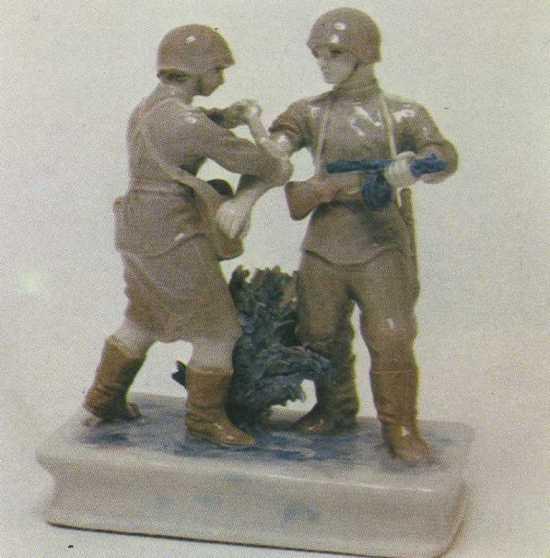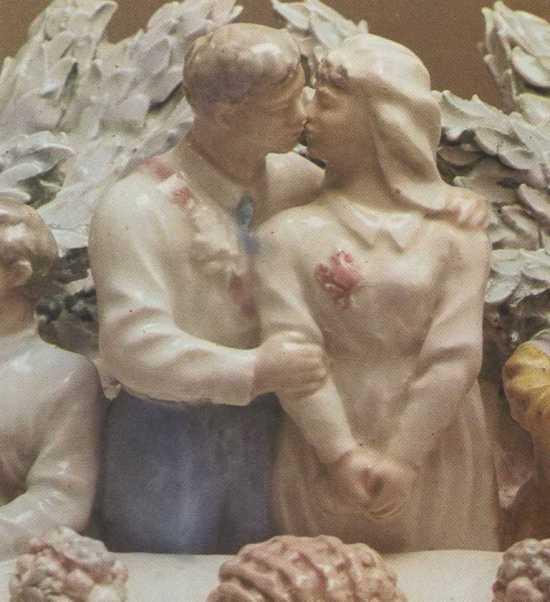Soviet Russian sculptor Alexey Sotnikov

Lenin among peasants. 1957. Work by Soviet Russian sculptor Alexey Sotnikov (October 3, 1904 – February 18, 1989)
Soviet Russian sculptor Alexey Sotnikov
The second half of the 50s has become a turning point in the development of all Soviet art, associated with internal changes in the country. Almost all Soviet artists captured new ideas in architecture and fine arts, the struggle against embellishment in all areas of arts and crafts. In particular, the artists – ceramists were in the forefront of the new movement for exposing the design and form. Thus, they reduced decorative elements, preferring the frank presentation of ceramics as a material. And A.G. Sotnikov approved this line precisely.
In 1957, Sotnikov created his famous Falcon, followed by a number of white porcelain birds. Noteworthy, a series of white birds brought glory to Dulevo porcelain factory.
At the first post-war International Exhibition in Brussels in 1958, the Falcon, along with his other works, received the highest award – the Grand Prix.
The main work of Sotnikov in the war years was the vase “Victory”. He began its implementation in late 1943, and completed in February 1944. On the day of the Red Army, February 23, 1944, it was already shown at the exhibition of the artists of the Grekov studio in the central House of the Red Army in Moscow. Vase “Victory” – a work of epic nature, created by means of small architecture and decorative plastic, in their synthesis. The upper tier is dedicated to liberation. The artist seemed to expect that victory would come in the spring.
Soviet Russian sculptor Alexey Sotnikov
Alexei Georgievich Sotnikov (October 3, 1904, Mikhailovskaya, Kuban region – February 18, 1989, Moscow) – Soviet animal sculptor. Honored Artist of the RSFSR (1978), a participant in the Second World War, he is one of the most significant ceramic artists of the 20th century, the author of the Sokol emblem of the Dulevo Porcelain Factory.






































